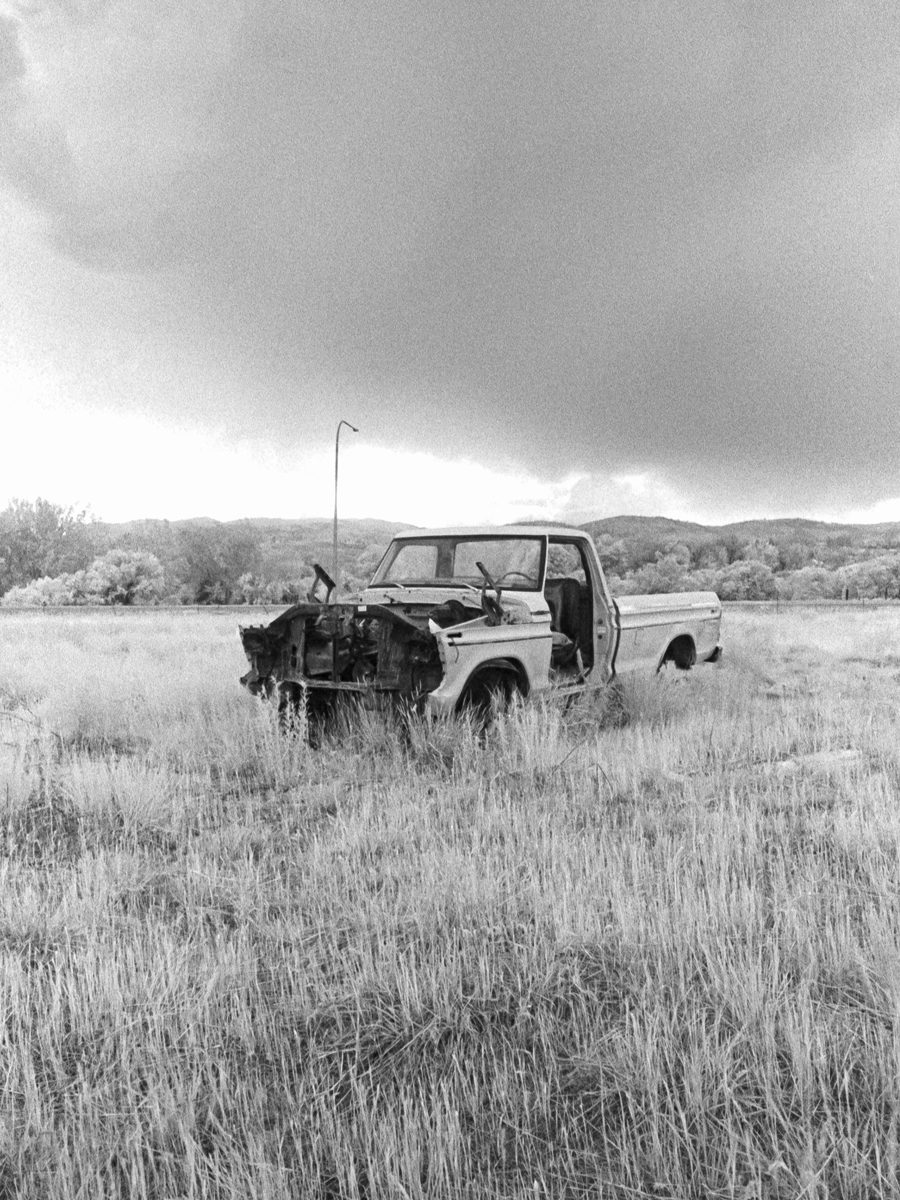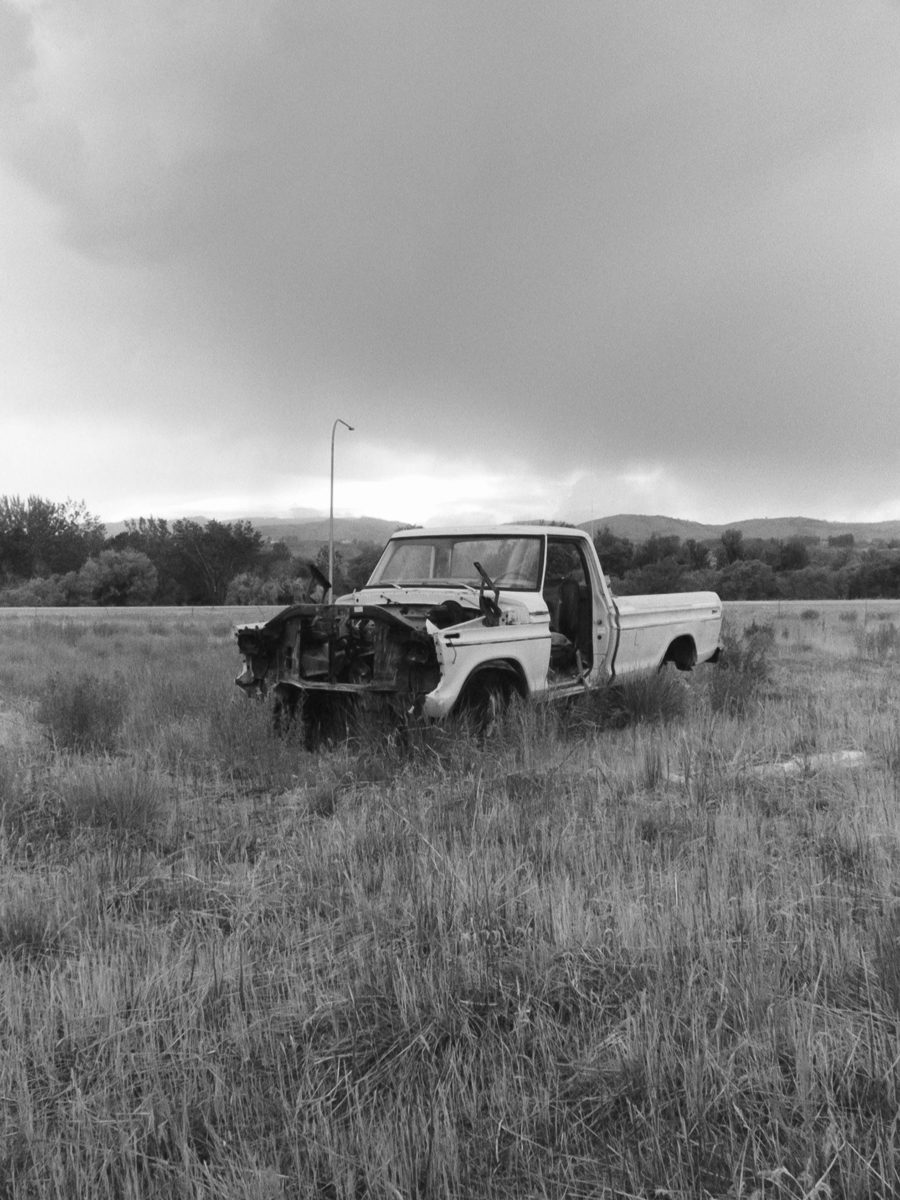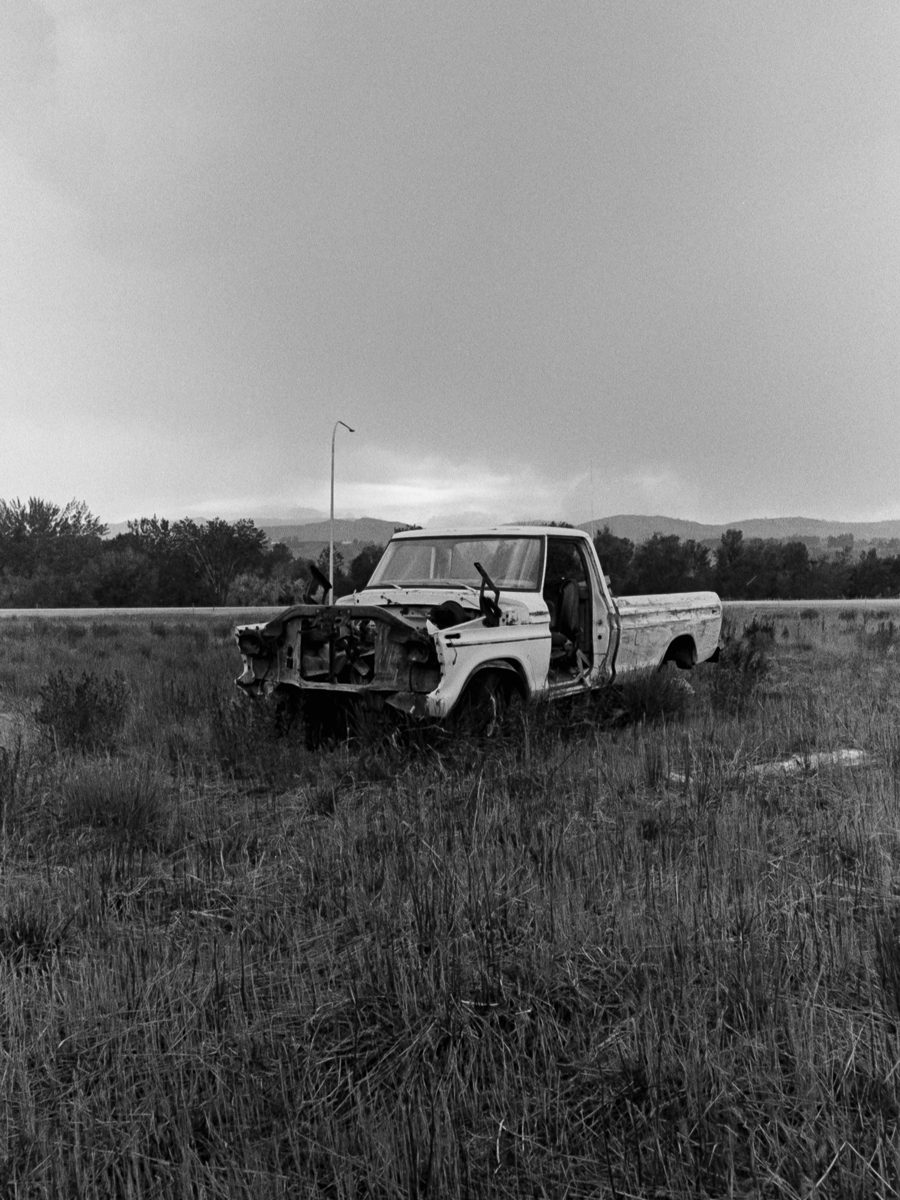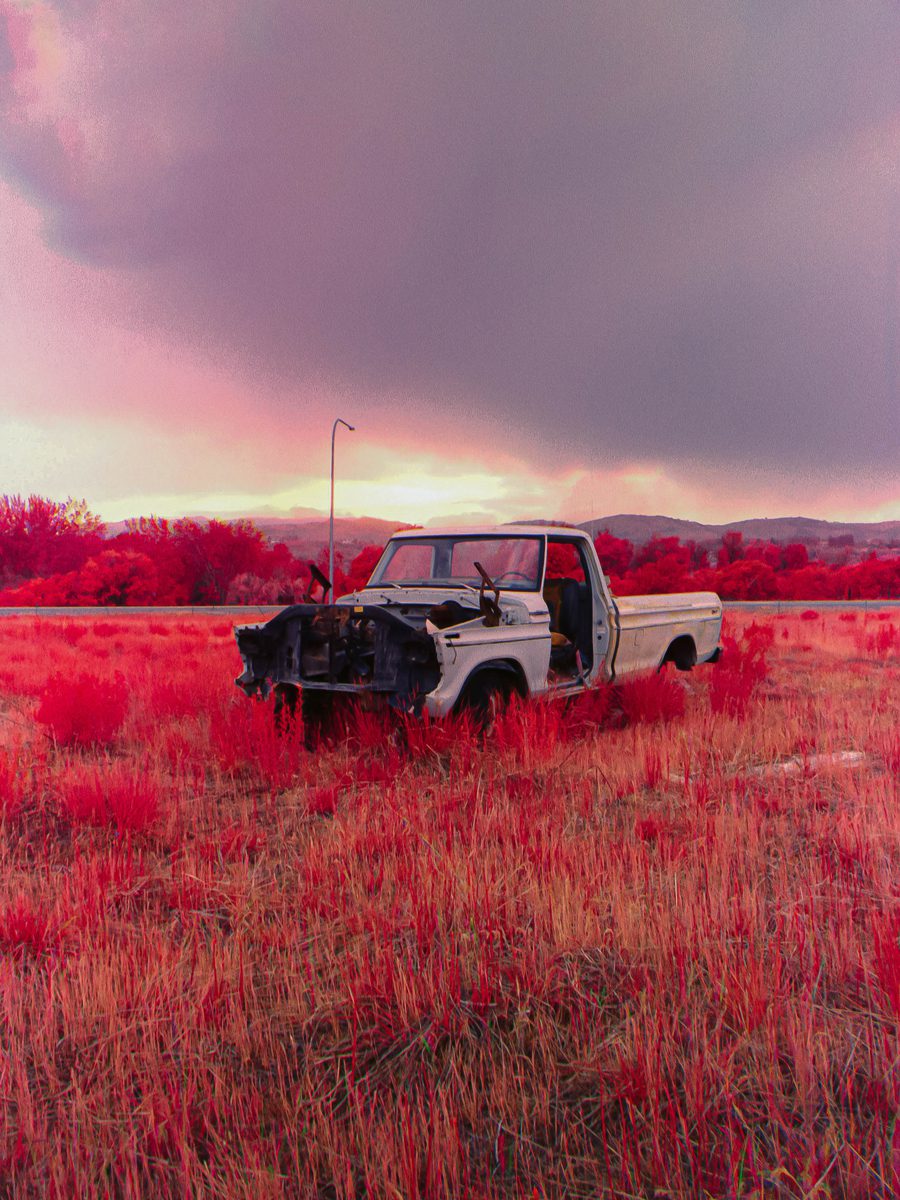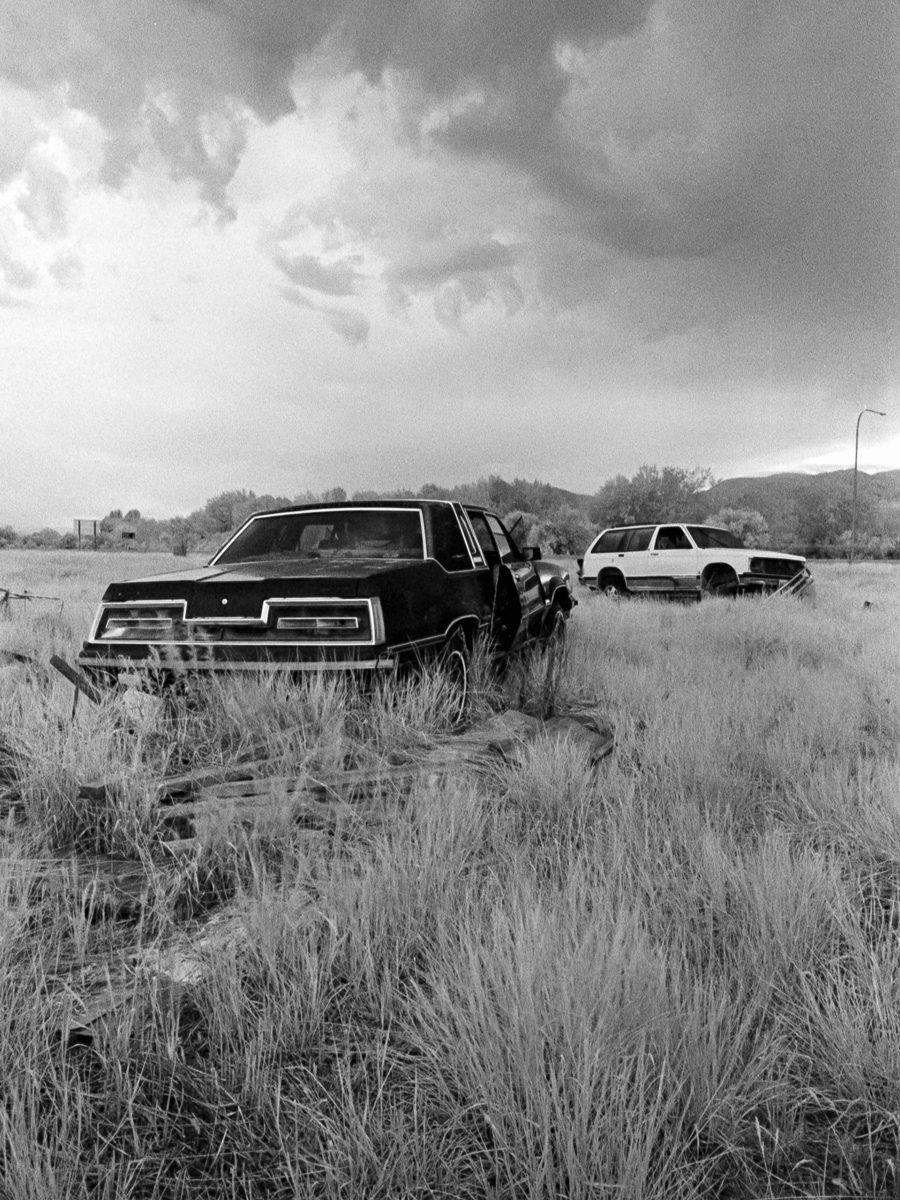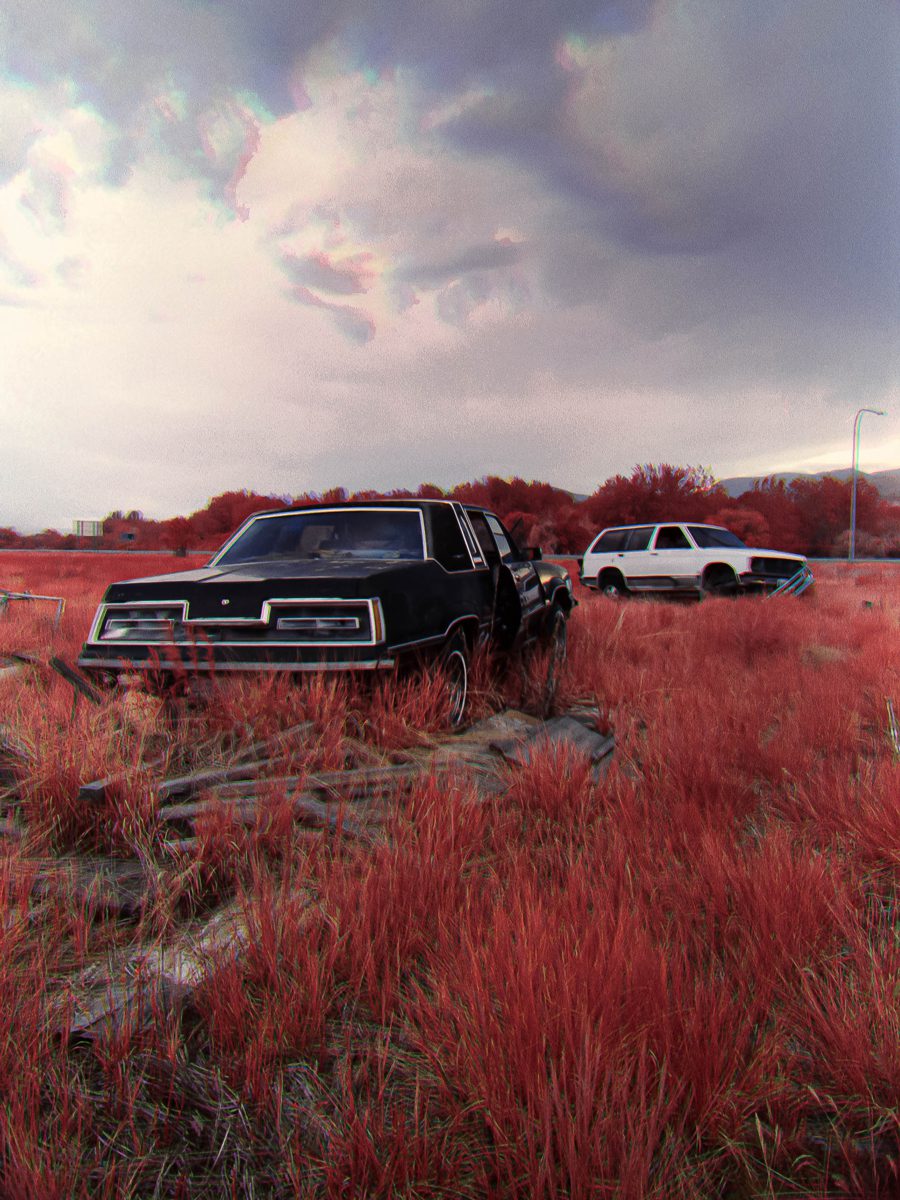The Trichrome Process Posted On 19th September 2023 To Magazine & Technique

A History on the Road
In May of 2023, I loaded up the car and I headed off to the North Cascades. The freeway had just reopened after a long, icy winter. I was desperate to break out of my work routine and follow my creative pursuits.
Growing up in the American Southwest I spent my childhood in the back of my father’s pick up on our family’s retreats. Being from a blue-collar middle class family, we were never going anywhere fancy. We made pilgrimages to Arkansas in my youth where abandoned and dilapidated properties were a common sight. I always viewed them as a personal time capsule of someone's life that had been left to the elements and the public eye.
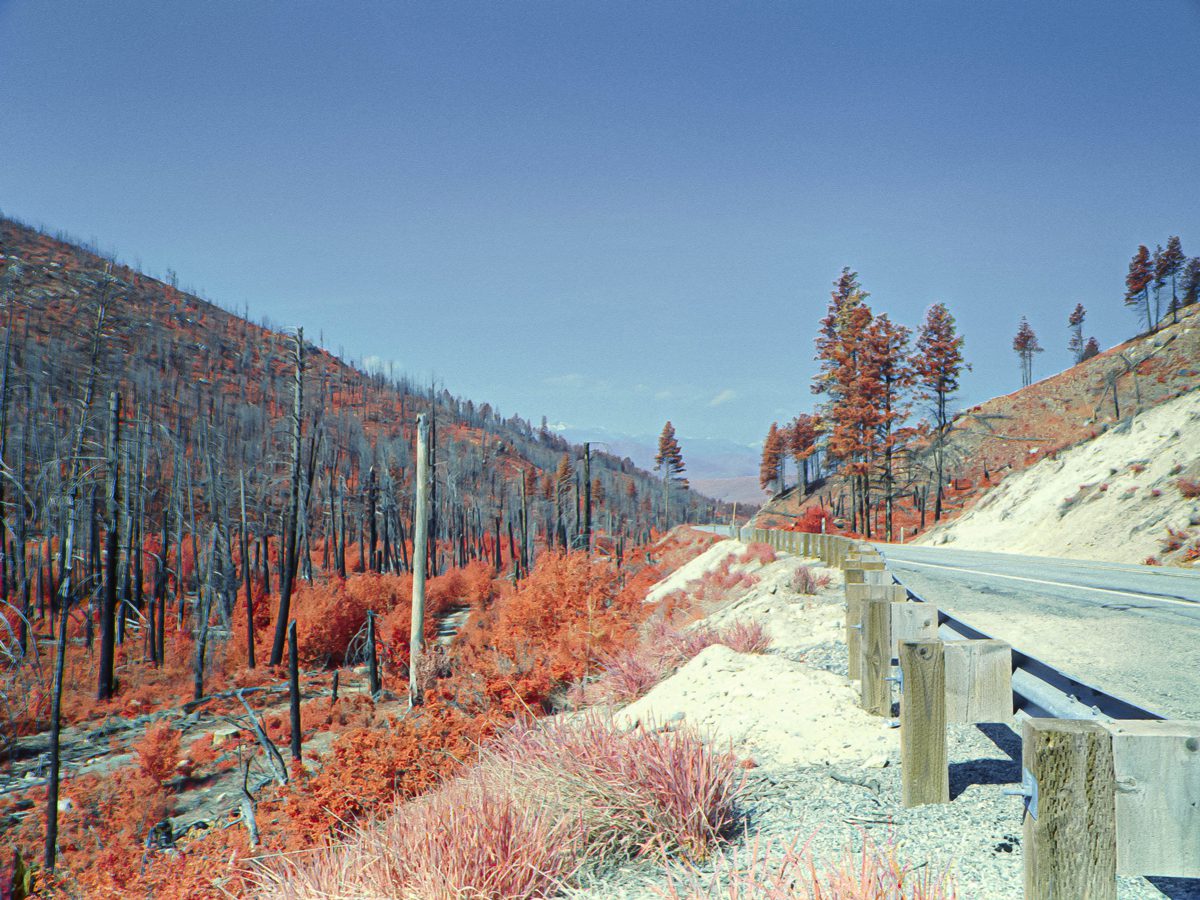
The Trichrome Process
When I first saw color infrared photos I was shocked to see green landscapes covered in red, pink, and magenta–they were so other worldly. I had to try it out. I decided the best way for me to get these results was to do the Trichrome method. Trichroming is the process of taking three black and white photos with three different color filters and is most commonly shot with a red, a blue and a green filter. To make infrared trichrome photos, you’re switching out your red filter for an infrared filter and most importantly, you're shooting on a film sensitive to infrared light. Making sure each photo is identical so that you can layer them in post requires you to set up your shots on a tripod and be careful not to bump it around. I have spent many hours doing long exposures at night so a tripod was neither intimidating nor limiting when I started experimenting with the trichrome process.
The filter factors
The filter factors, however, were a bit daunting. My first few attempts were done with an Olympus OM-1 and a Mamiya Twin Lens Reflex camera. I had moderate success, but the final photos weren’t perfect by any means. Battling the setting sun made it hard to get an accurate meter of my scenes. My early attempts were bogged down with conversions of the filters and settings. As a result my images had large color shifts. After figuring out that my Canon EOS camera could meter through the Infrared filter, I started shooting exclusively with it because of its aperture priority mode, as well as its inclusion of in-between shutter speeds.
Color Infrared can be outlandish, but my goal with my photos is to temper them into something dreamy and nostalgic. I use up to five filters in my shooting process to allow more control when it comes to post-production edits. Sometimes I use an infrared, green, and a blue, a common trichrome combination. Other times, the photo requires infrared, red, and blue, or I’ll even replace the red with the yellow. Regardless of the mechanics, I want my color infrared photos to be subdued and less vibrant. I want the color infrared look to be there, but not as the focal point. Something you see and notice, but it's not owning the composition.
A Versatile Tool
There’s not many film stocks that have infrared sensitivity like SFX 200. Early in my black and white shooting career, SFX 200 wasn’t even on my radar. Now, it is an essential part of my kit. The consistent look I get from SFX 200 is the main reason I use it. ILFORD SFX 200 gives me similar results to HP5+, but with added infrared sensitivity. With SFX being such a neutral black and white film on its own, the addition of filters has allowed me to hone my own preferences in my black and white photography. With infrared sensitivity, SFX 200 opens up possibilities that few other film stocks offer. ILFORD’s product provides a powerful and reliable stock that allows me to create a wide range of images, from editorial to surreal.
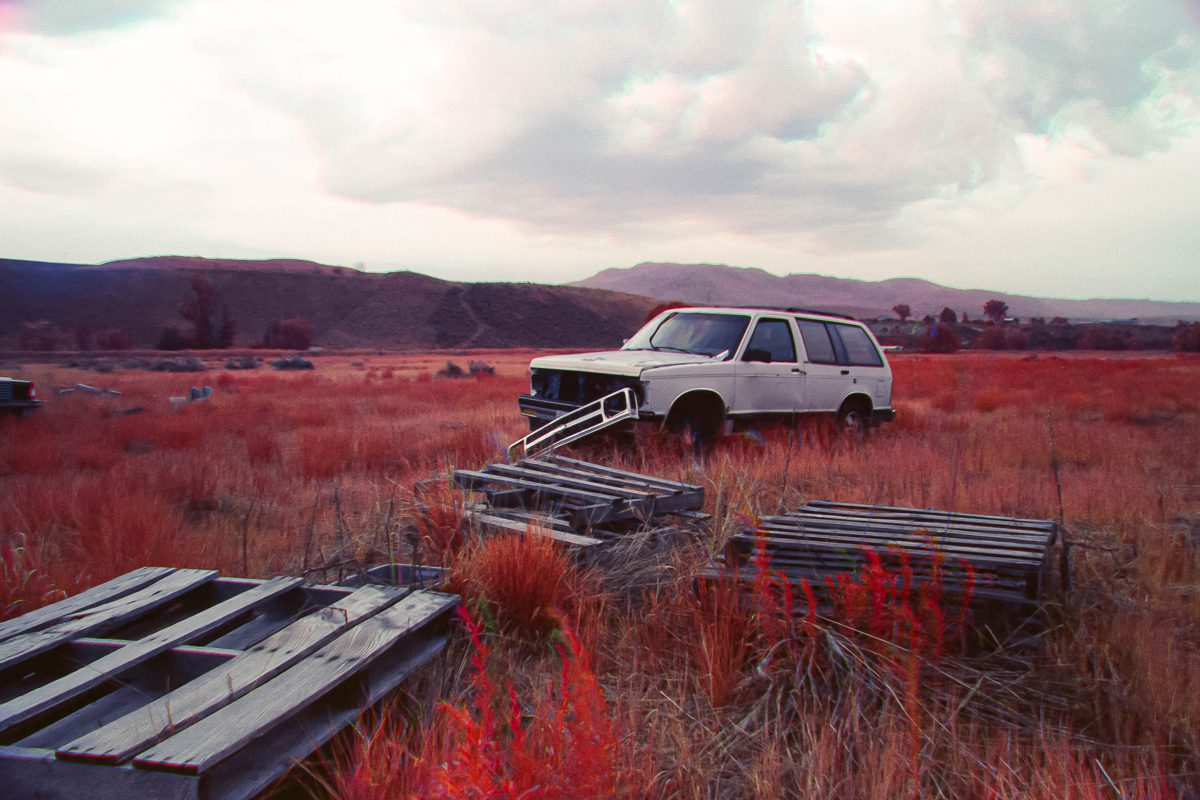
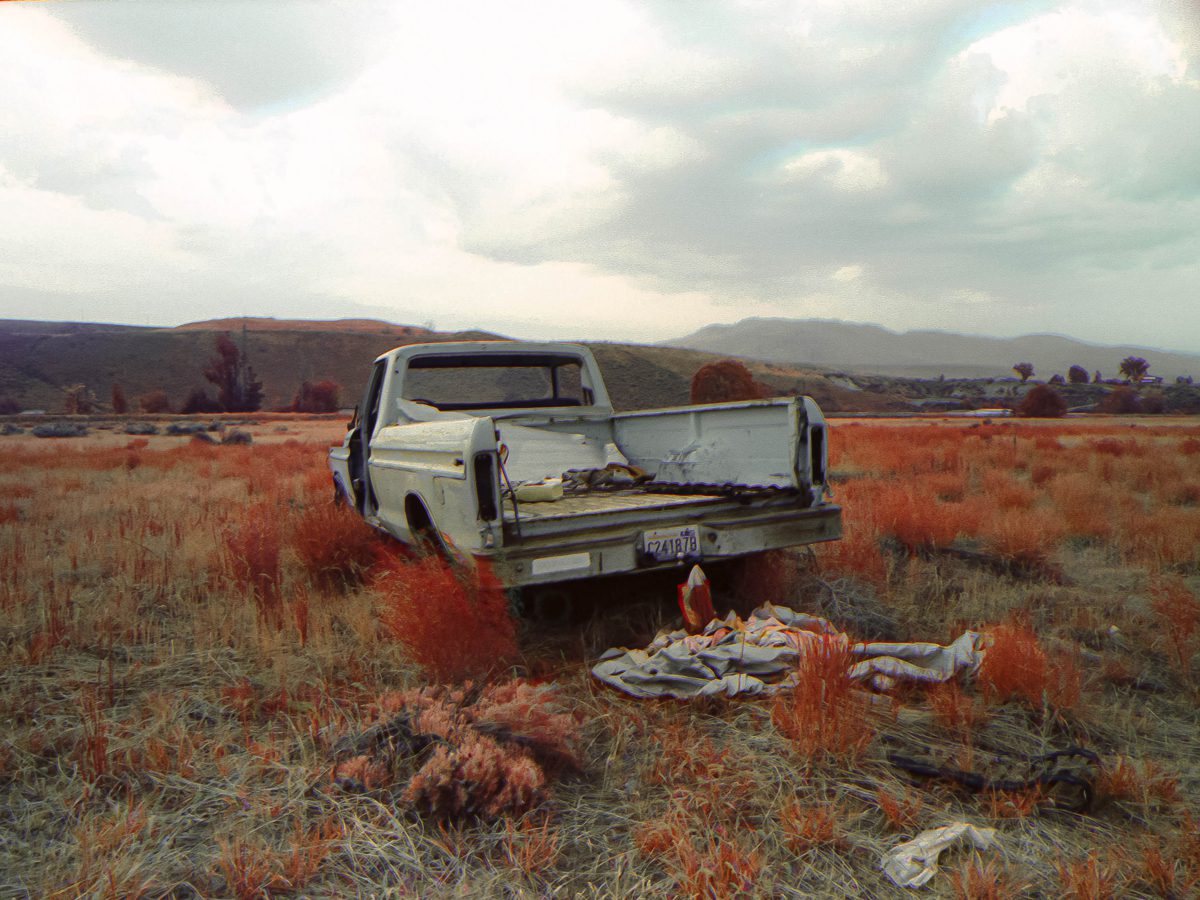
A Broken Down Scene
As I set up my shot, everything comes full circle. A broken down truck in the middle of the American West. A scene I'm all too familiar with. I have a soft spot in my heart for old broken down vehicles. My father was a mechanic, so I spent my childhood around them. I can’t tell you a single player's name in the NFL right now, but I can pinpoint the make, model, and year of a dilapidated vehicle with ease. I honestly get excited when I see a thirty-year-old sedan driving down the street. So when I found this field outside of Omak, Washington with half a dozen abandoned vehicles I was over the moon.
The storm blowing in overhead wasn’t going to stop me from examining this graveyard. I wanted to see what was missing, what was left, and investigate the reason why these vehicles had all been abandoned in this forgotten field. I wanted to know their story. With the light fading I quickly jumped around from car to car trying to get the best compositions before being rained out. The brutal shapes of these bent metal corpses compared to the softness of the blowing red grass and the dark, ominous clouds overhead had to be preserved. I felt as rigid as my subject matter, racing against time to capture the light.
The Experience
I get completely engrossed in shooting trichrome photos. The slowed down nature of trichrome photography is what keeps me coming back to it. Yes, the results are unique and different, but the process of setting up the shot is what I find most engaging. The tactile experience of being in the field, setting up the tripod, and taking the filters on and off, really cements you into the moment and the scene. When shooting this way you forget about everything else, you’re in the moment trying to capture the perfect shot. Your filters have to come and go in just the right order. Your mind must be present and involved.
So often now we can be distracted by background noise, or have a lingering thought that refuses to wane. However, while out and shooting my mind is solely dedicated to the art I am making. It’s rare to have moments of solitude, of clarity, but when shooting trichrome photos the mundanity of everyday life falls away.
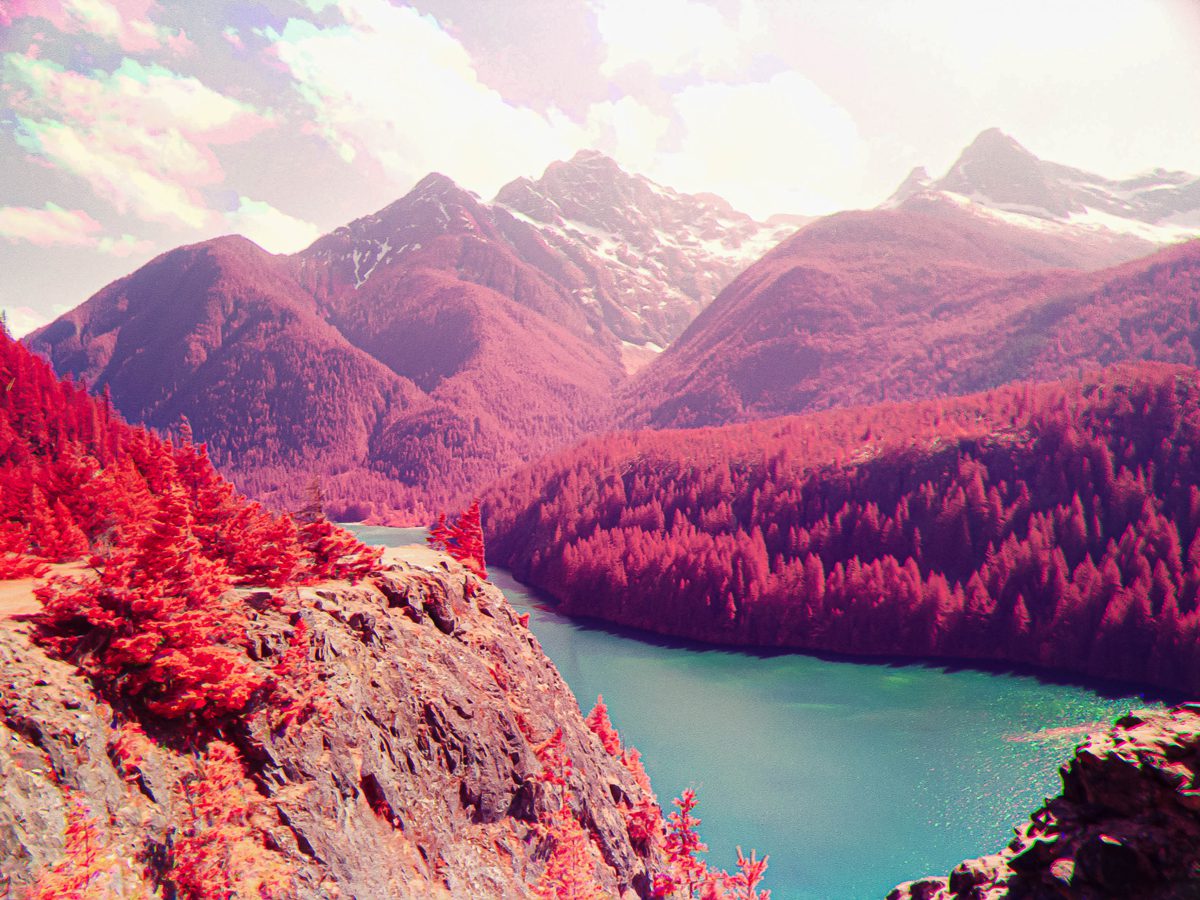
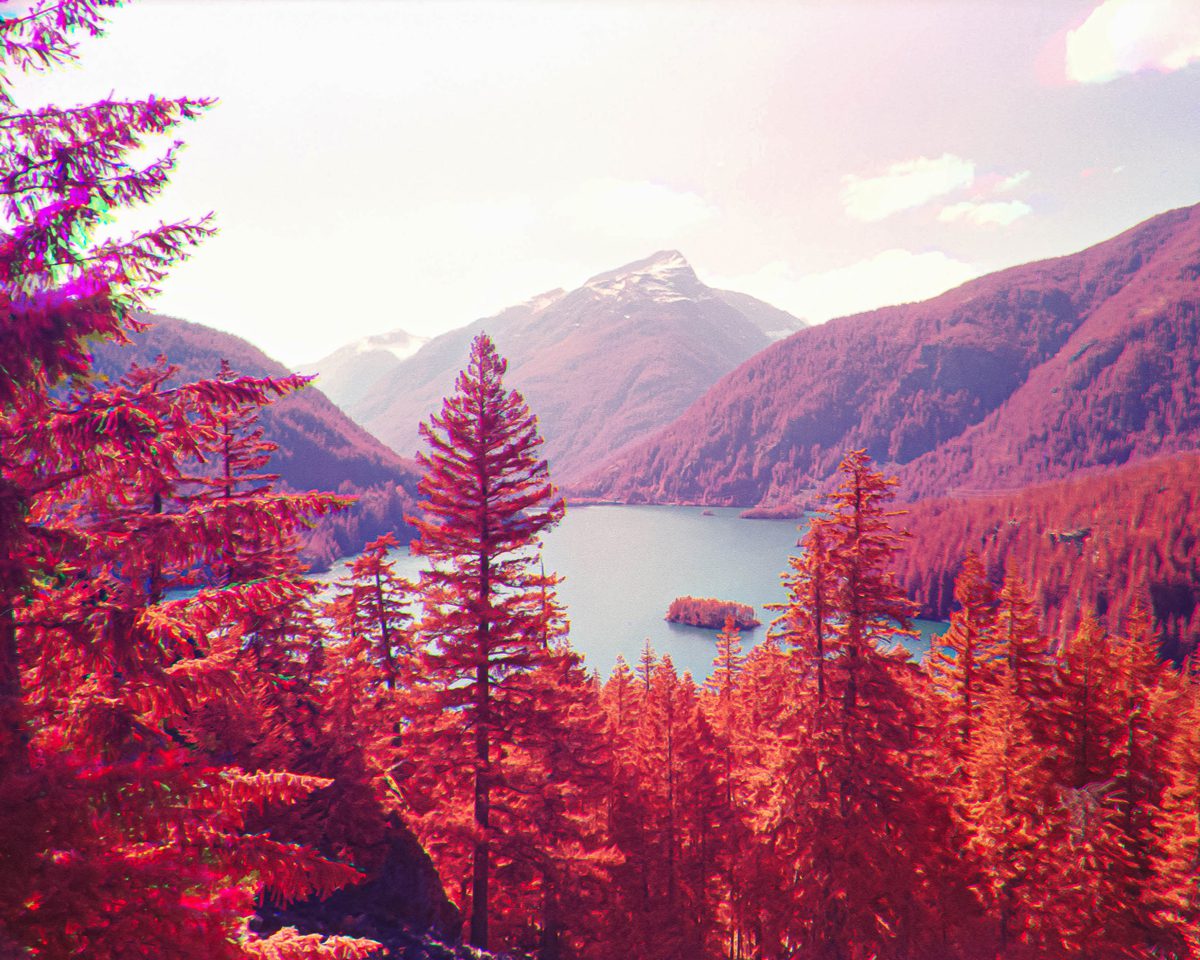
Conclusion
I am still in love with traveling the American West by car. Now based in the Pacific Northwest, I find myself moving East as I did with my father. Just as he carried his Canon AE-1 Program to capture family memories, I now travel with my own camera in these locations. I’m capturing a feeling of nostalgia and loneliness in areas that have been overlooked or forgotten. And using the trichrome method with SFX 200 allows me to see the light hidden all around us.
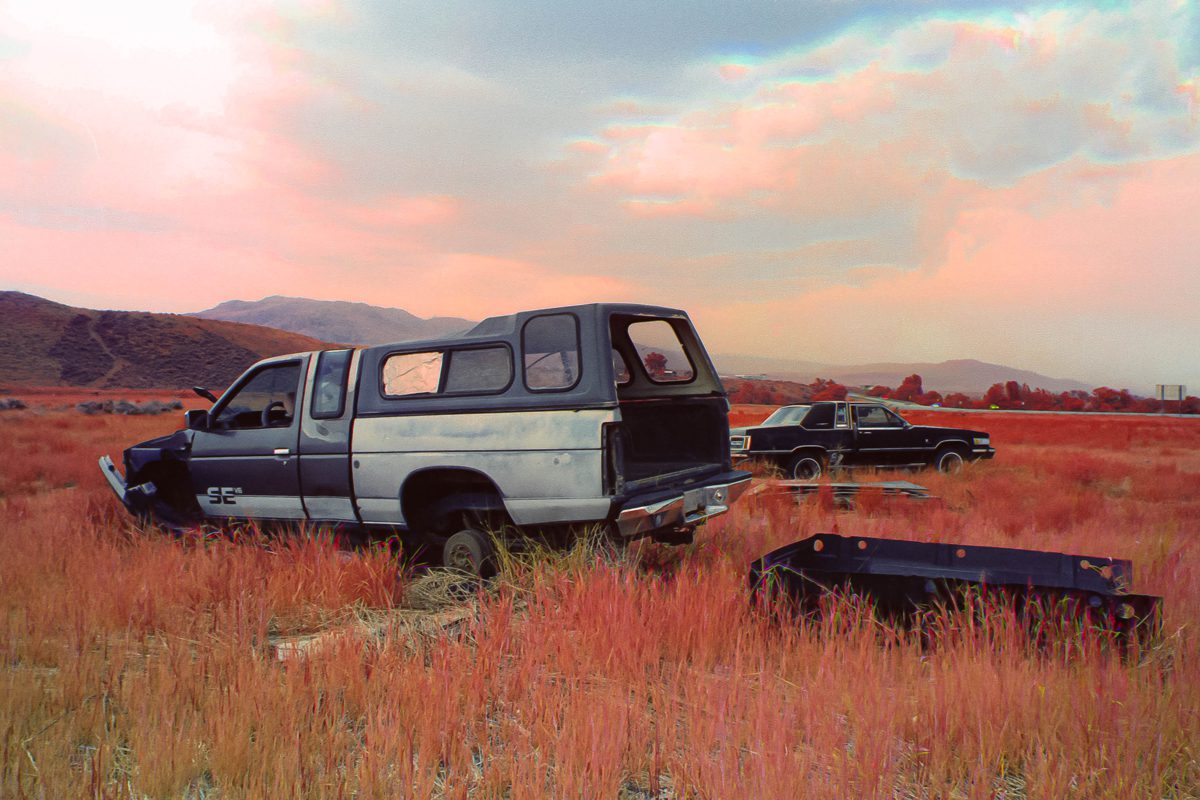
©Casey Thurman
About The Author

Casey Thurman
Casey Thurman is a film photographer based in the Pacific Northwest. Inspired by nostalgia and loneliness, he captures overlooked Americana landscapes. Working in color and black and white, Casey uses found analog gear to convey a sense of time, place, and memory.
Born in Southern California, Casey was raised by an Irish immigrant and an auto mechanic. He went on to get his B.F.A. in Illustration before discovering photography. These days Casey resides in Washington state where he spends most of his time exploring the surrounding landscapes.
To follow Casey’s work visit:
Website:|| Northwestdepressed.com
Instagram:|| @northwest_depressed
Youtube:|| Northwest Depressed
Prints:|| northwestdepressed.darkroom.com







